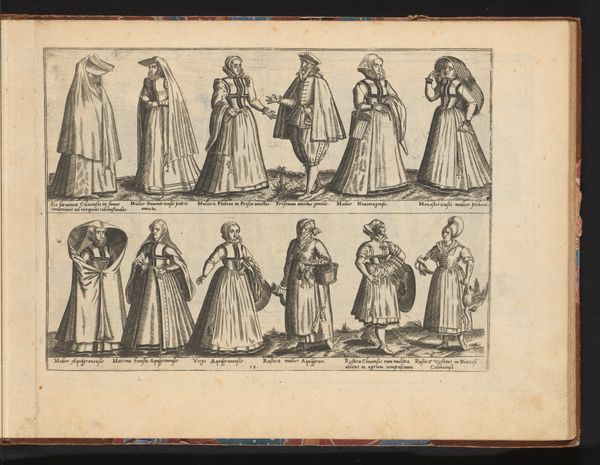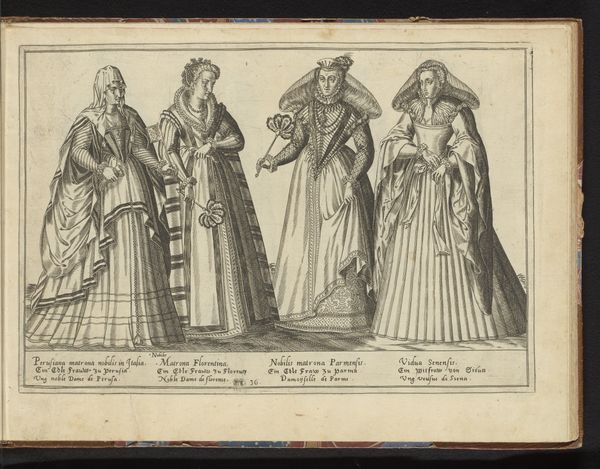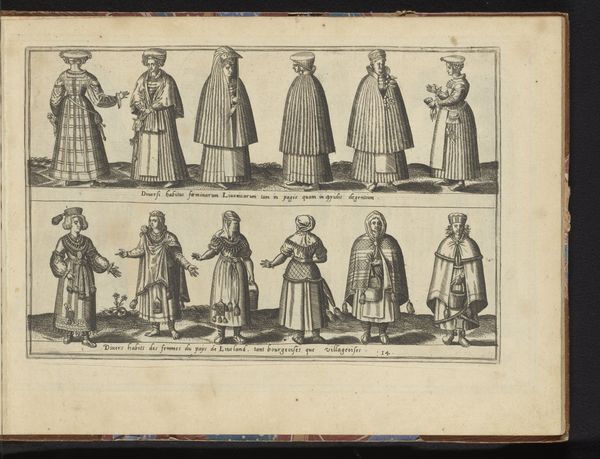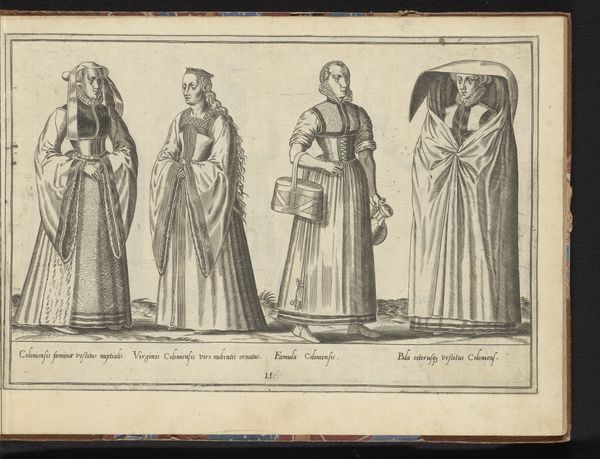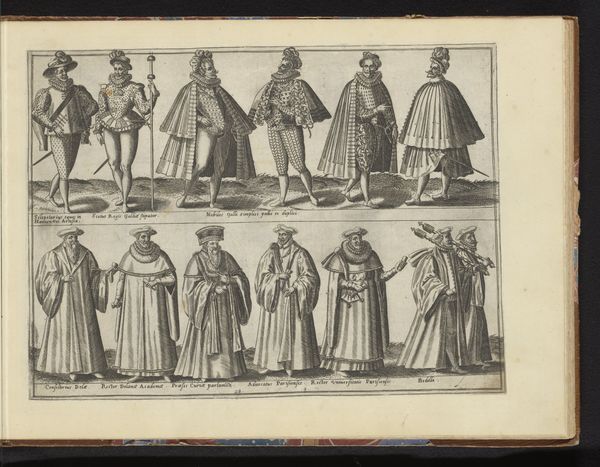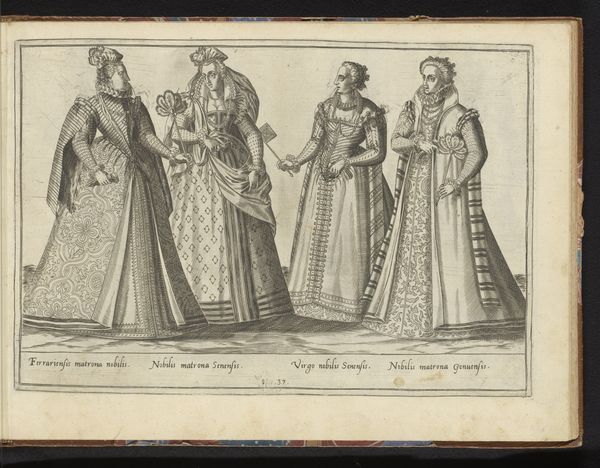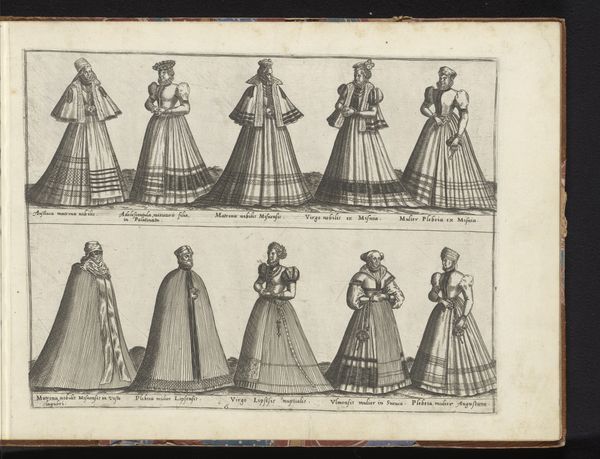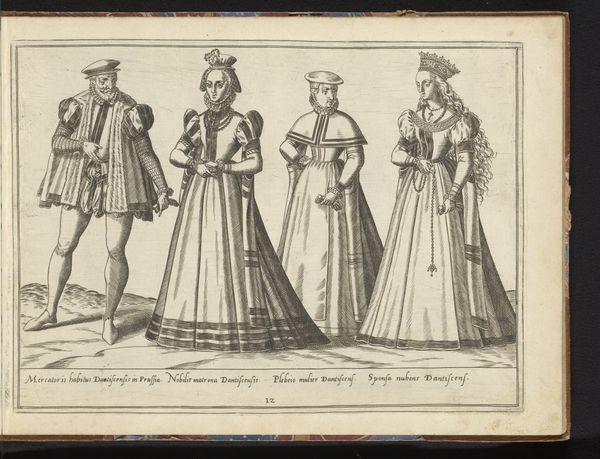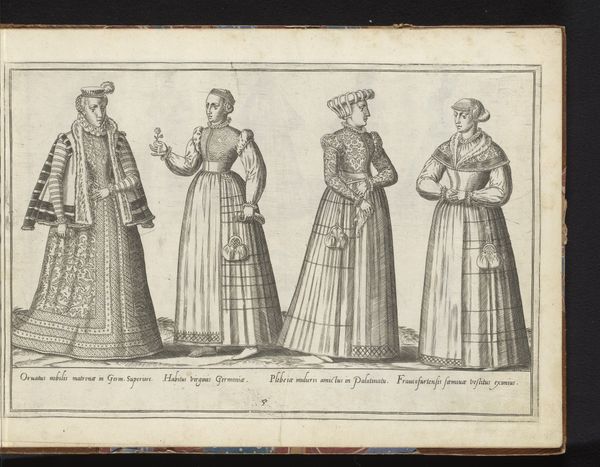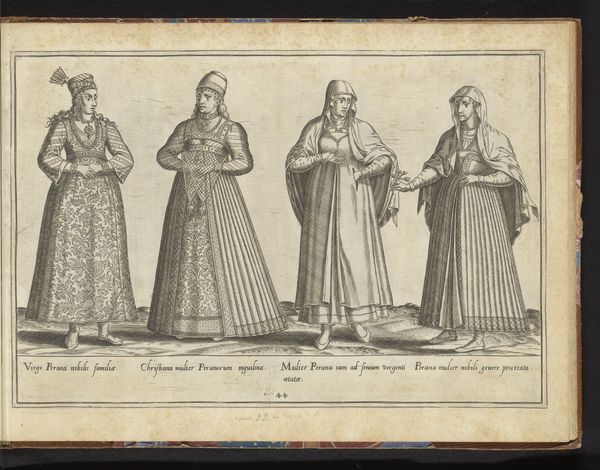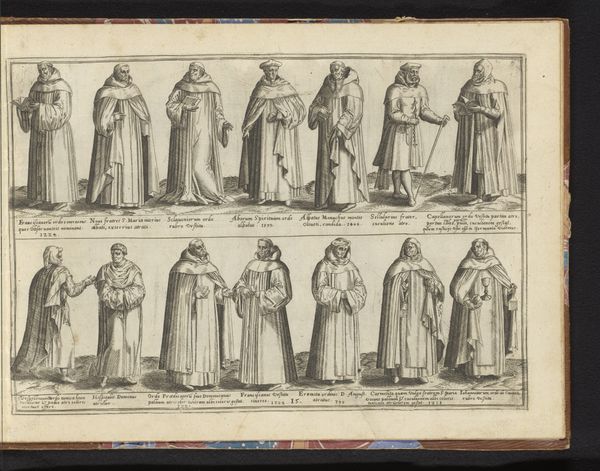
Elf vrouwen, gekleed volgens de Italiaanse mode van ca. 1580 before 1581
0:00
0:00
drawing, print, ink, engraving
#
portrait
#
drawing
# print
#
ink
#
coloured pencil
#
pen-ink sketch
#
history-painting
#
italian-renaissance
#
engraving
Dimensions: height 265 mm, width 360 mm
Copyright: Rijks Museum: Open Domain
Curator: Look at this fantastic display, “Elf vrouwen, gekleed volgens de Italiaanse mode van ca. 1580” by Abraham de Bruyn. The piece appears to be a print made using ink and engraving techniques, offering a snapshot into the styles of the time. Editor: Oh, my. It's a grid of stiff portraits; the clothing is like an exoskeleton. All those high collars... they feel less 'fashion' and more 'imprisonment.' Curator: Interesting, the Italian Renaissance style focused on elegance and sophistication, seen here through the elaborate gowns, accessories, and meticulous detailing in each figure. Don't you find a hint of that sophistication seeping through, despite the rigid poses? Editor: Perhaps, but the societal constraints are practically screaming from the page. I wonder how truly expressive these women felt behind layers and layers of expectation and fabric? One almost gets a sense of caricature. What was Bruyn trying to convey with this display? Curator: I feel it’s important to also see the purpose; I feel he probably sought to record and disseminate these styles— almost like a fashion blog of the era! It allowed the widespread adoption of Italian fashions across Europe by those that had access to these kinds of prints. Editor: A fashion blog! I love that. So, it's less about the individual woman, and more about democratizing fashion? Curator: Precisely. Prints democratized visual culture during the Renaissance, making art and fashion accessible to a wider audience, so this may not capture individuality as we may appreciate it now. Instead, we gain some insight to sartorial trend adoption from a culture far away. Editor: And here I was ready to write them all off as being overdressed. Instead, maybe some of them felt liberated because of these gowns. Thanks to Abraham de Bruyn and your insights, I can better appreciate its story, from the fibers of each dress. Curator: Likewise! Seeing artwork this way really emphasizes the role it plays in disseminating art history in an accessible way. These records remind us that even the loftiest cultural heights have relatable roots.
Comments
No comments
Be the first to comment and join the conversation on the ultimate creative platform.
